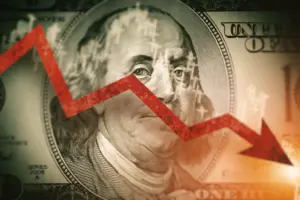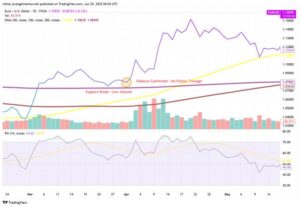Recently, the Federal Reserve is set to hold a meeting, and the market widely expects an interest rate cut. Based on information from two articles, economists, fund managers, and strategists predict that the Fed will take a more gradual approach to rate cuts rather than the larger cuts anticipated by the market.
Background on the Fed Rate Cut
The market is currently expecting a 25 basis points (0.25%) rate cut from the Federal Reserve. According to a CNBC survey, 84% of respondents predict a 25-basis-point cut, while only 16% expect a 50-basis-point cut. This differs slightly from the market’s expectation, as the Fed futures market sees a 65% chance of a 50-basis-point cut.
The goal of this rate cut is to achieve a "soft landing" for the economy, meaning the Fed aims to control inflation without triggering a recession. About 74% of those surveyed believe that the timing of the cut is appropriate and will help the U.S. economy achieve this soft landing.
Economic Growth and Unemployment Expectations
While a rate cut is widely anticipated, there are some differences in opinions about the future of the economy. Most experts predict that the U.S. economy will grow by 2% this year, but this growth will slow slightly to 1.7% by 2025. At the same time, the unemployment rate is expected to rise slightly to 4.4% this year and 4.5% by 2025.
However, not everyone believes the Fed has enough time to execute a soft landing. Some analysts argue that the Fed acted too late with previous rate hikes, and now the window for effective intervention is narrowing. If the Fed opts for a small rate cut, it may miss the chance to prevent a more severe economic downturn.
Impact of the Rate Cut on Markets
The stock market is highly sensitive to the Fed's rate decisions. According to experts, if the Fed proceeds with gradual rate cuts in the coming months, the stock market is likely to experience steady growth. However, there are concerns that if the cuts are not large enough, market volatility could increase.
Tech stocks, especially those involved in artificial intelligence, like Nvidia and Microsoft, are expected to benefit from the rate cuts. These companies have made massive investments in AI, and lower interest rates could provide more financing opportunities, boosting their stock prices further.
Long-Term Effects and Uncertainty
The Fed's rate cut will not only impact the U.S. economy but could also have global consequences. As the Fed cuts rates, the appeal of the U.S. dollar may diminish, leading to capital outflows from dollar-denominated assets and into emerging markets. This trend could create opportunities for other countries, particularly emerging markets like China.
However, the global economic landscape remains complex, with inflationary pressures and geopolitical tensions potentially affecting the oil and commodities markets. Every future decision by the Fed will have a significant impact on the trajectory of both the global economy and financial markets.
Conclusion
The expectations surrounding the upcoming Fed rate cut have become clearer, with a 25-basis-point cut seeming the most likely. However, the full effects of the cut will take time to unfold, impacting not only the U.S. economy but also global markets. Investors should closely monitor the Fed's policy adjustments in the coming months to navigate potential market shifts.





